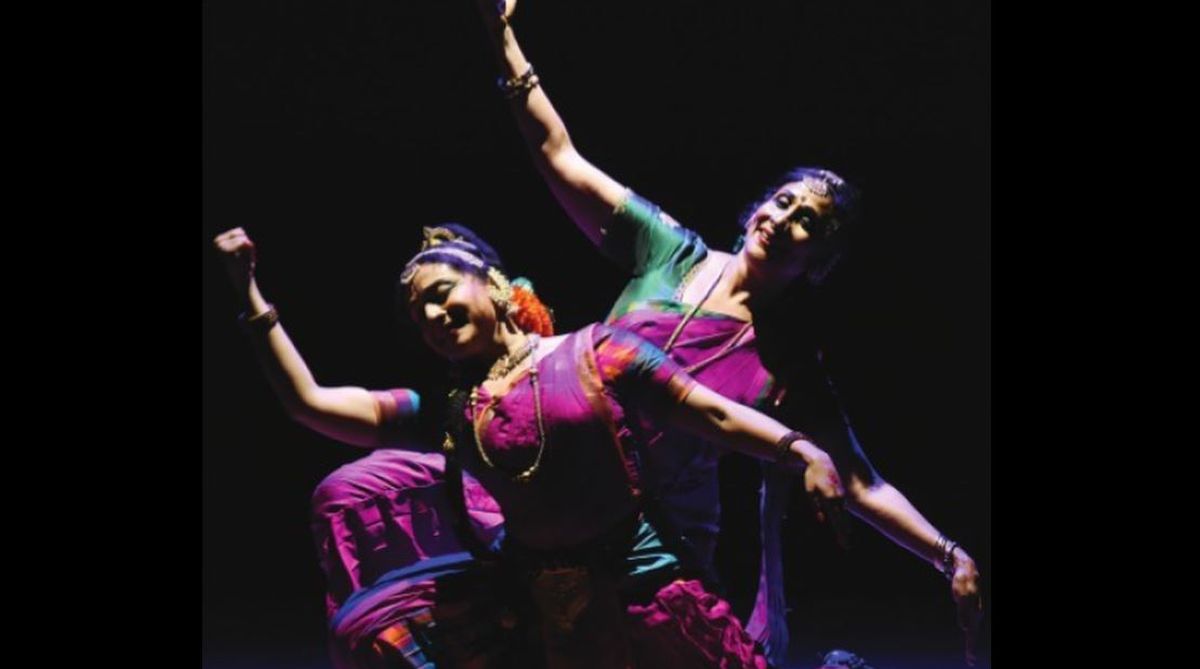Laced with mesmeric renditions
The OMC Guru Kelucharan Mohapatra Award Festival started with great fanfare at Rabindra Mandap, Bhubaneswar, recently as connoisseurs and discerning…
A motherdaughter duo of iconic performers masterfully etched the love of a mother for her child through the vocabulary of Kuchipudi.

Sita in the lap of Mother Earth.
The OMC Guru Kelucharan Mohapatra Award Festival 2018, conducted by Guru Ratikant Mohapatra, director of Srjan, was recently held at Rabindra Mandap in Bhubaneswar.
Kuchipudi guru and performer Vyjayanthi Kasi along with Prateeksha Kasi’s presentation of Antaranga Taranga on the occasion was based on the love of a nurturing mother. She used the following quote to express her idea, “Even if the oceans ceased to exist; Even if the winds suddenly stopped, Even if wood refused to burn, the love of a nurturing mother will remain eternal.”
Antaranga Taranga—a production by the mother-daughter duo —explored the shades of Vatsalya Ras. The choreographer Vyjayanthi Kasi said, “As we immerse ourselves in the beautiful world of Vatsalya, we realised quickly that it is not only limited to a mother’s love for her own child. Vatsalya is that emotion that makes the fierce and mighty Narasimha, who killed Hiranyakashipu, embrace Bhaktha Prahlada with warmth.” It was etched in the vocabulary of Kuchipudi nritya and natya. Vyjayanthi Kasi took three episodes to show whatVatsalya Ras is made of.
Advertisement
There was high drama when Lord Vishnu, Prahlada’s father, clawed asunder Prahlada’s birth father Hiranyakashipu’s heart causing his mortal end and tenderly stroked Prahlada’s hair with the same claws. Vatsalya, or the emotion of love for a child, is one that encompasses all living hearts. The finer nuances of the mother-child relationship of Yashodha for Krishna were enacted sensitively by Vyjayanthi Kasi and her daughter disciple, Prateeksha Kasi.
Though not born of Yashoda’s womb, the joy of pure love touched every heart. Krishna was no less endearing to Yashoda than he could have been if she was the birth mother. She pampered him, chided him, enticed him and scolded him. It did not matter to her that he was the exalted Narayana. To her, he was her little baby, who must be protected from the dangers of the world.
The impact of Vatsalya Raswas beautifully etched in the case of Sita, who was born in the lap of Bhoomi (Mother Earth). This part was imaginatively conceptualised — a moving dialogue was vocalised showing Mother Earth rejoicing on seeing Mithila being decorated like a bride on the day of her daughter Sita’s swayamvara. Her happiness made her go hastily to witness this auspicious moment and give her blessings. As the mother watched the daughter’s glorious moment back stage, Prateeksha as Sita took on the role of the coy bride on stage.
The tune of the song Sita Kalyana Vaibhogame, Rama Kalyana Vaibhogame struck a chord in one’s heart. There was poetry delineated with wavy hand movements and stylised walks while showing appropriate sentiments daintily and aesthetically through facial expressions, eye movements and movements of the entire body. Mother Earth’s joy was all the more when she witnessed that the groom was no ordinary soul but an incarnation of Narayana.
The Kuchipudi dance form, which is an offshoot of Kuchipudi Yakshagana, is a complete theatre, using all four abhinayas as delineated in the Natya Shashtra. Therefore vachika abhinayaor the spoken word is an integral part of it. Vyjayanthi Kasi used dialogues in keeping with the tradition of the form. The ecstatic mother said, “Today he stands as Ram to wed my daughter. It is he who also took the form of a wild boar to save me from the clutches of the demon Hiranyaksha!” Mother Earth cursed Ravana who had forgotten the laws of existence.
Her resolve to protect Sita was portrayed authentically. She then urged Sita to have faith in herself through both dialogue and expressive dance. She reminded her that she was the incarnation of the pious Vedavathi, destined to bring an end to Ravan, displaying pride in its dramatisation. With anger she expressed that the mere attempt to touch Sita would burn him to ashes.
The mother’s advice to the daughter to have faith in Ram, who would kill Ravan and unite with her; her shock of Ram listening to the gossip of people tainting Sita’s character and separating Sita from him. This was a blow, which she found difficult to digest. She opened up her womb and took back her child. The last bit was poignant. Mono-acting of all these various emotions left a lump in people’s throats. The act of taking Sita into her womb was innovative. Vyjayanthi is a creative artist and her productions time and again have proved so.
Through the narration of the story in the genre of Kuchipudi, Vyjayanthi Kasi gave us a peep into the Puranic tale of why Sita stood separated from her consort. Sage Bhrigu wanted Narayana to feel the pain of separation from his wife because it was Narayana who had killed his wife for which he had to undergo pain. It was Bhrigu’s curse that made Narayana suffer.
Advertisement